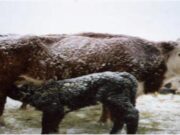
Food security for the swelling human populations needs to be addressed by enhancing and adapting the novel advancements in the technology of food and feed production in vogue. About 60 percent of dietary protein is from animal products in developed countries, compared to only 22 percent in developing countries and there is substantial room for expansion of livestock production. Apart from food security, the economy of developing countries is greatly influenced by the livestock sector. Livestock and poultry farming these days became an intensive venture is often challenged by range of diseases predominantly of infectious diseases. The sad truth is most of the livestock diseases are vaccine-preventable. Large scale livestock farmers/ rearers aiming for export of their products to the developed nations need to meet out the quality standards claimed by the importer. The animal products intended for export are expected to be disease-free. The incidence of a disease can be reduced and subsequently eliminated from the population by regular and proper vaccination. Considering the economics and environmental impact of infectious diseases, it is always superior to prevent disease rather than having to resort to treatment and further consequences
Implications of Vaccination:
Vaccination of animals against infectious diseases not only prevent the incidence of disease and the economic losses due to loss of animals, cost of treatment, livelihood in case of small and marginal livestock farmers, loss of productivity in terms of reduced animal growth, drop in milk production, zoonotic transmission, wastage of animal proteins and the international trade even if there are traces of disease incidence. Vaccination exposes the animals to either an inactivated or non-virulent (non-infective) or a subunit of the pathogen (immunogenic components) and confers protection from the disease agent before the animal is exposed to a natural infection. Vaccination induces antibody production and/or cellular mediated resistance in the animal against disease or infection. Hence, vaccination mimics an infection, the body and its defensive system will “remember” the identity of the invading organisms. On exposure to the infective pathogen, the animal is ready to fight it and will not fall ill and suffer. Vaccination not only protects the individual vaccinated animal, it also helps to protect the population from the disease by inducing “herd immunity“.Vaccines stimulate the body to produce its own defence against infection.
Disregarding Vaccination and its impact
The vaccine-preventable diseases are often overlooked by the farmers until there is an outbreak of the disease resulting in the loss of production or the animal itself. In the event of an outbreak, the veterinarians are compelled to reach out to the antibiotics to contain the spread of the disease or to deal with the secondary bacterial infections to save the diseased animal. Statistics show that the consumption of antibiotics in animal husbandry is much higher than the human medicine. The consumption of antibiotics is projected to increase by 6 % by 2030.
First and foremost; it results in the unnecessary exposure of the infected animals to antibiotics. Secondly, antibiotics used as ancillary therapy interact with the microbiome of the diseased animals leading to the emergence of antibiotic resistance in them. Thirdly, the antibiotic residues present in the products of the treated animals like milk, meat, egg, etc. reaches the end-users who are exposed unknowingly. Additionally,40-90% of the antibiotics used to treat animals are also shed in their excretions and secretions as parent compounds in their native form (depends on the class of antibiotics) eventually reaching the environment and contaminating soil and water bodies. Besides, manure from these farms having antibiotics/ residues or the antimicrobial resistance carrying microbes (AMR microbes) when applied as fertilizers or irrigation of crops with wastewater enters the agroecosystem and ultimately the food chain. Hence, the unnecessary usage of antibiotics to control vaccine-preventable diseases intensifies the emergence and dissemination of antimicrobial resistance in the microbial community present in the shared ecosystem of humans, animals, and the environment.
With the intention of reducing and consequent elimination of AMR microbes in the ecosystem, awareness on the importance of vaccination and the penalties related to ignorance of vaccination from the public health perspective should be created through various mass media platforms like local FM, self-help groups, and through animal husbandry departments periodically. In addition to vaccination, good husbandry practices like cleaning, disinfection including efficient bio-security measures are the most significant factor in the prevention of diseases in livestock.

Ramya. K and Sankar. P
Veterinary College and Research Institute, Namakkal,
Tamil Nadu Veterinary and Animal Sciences University



















